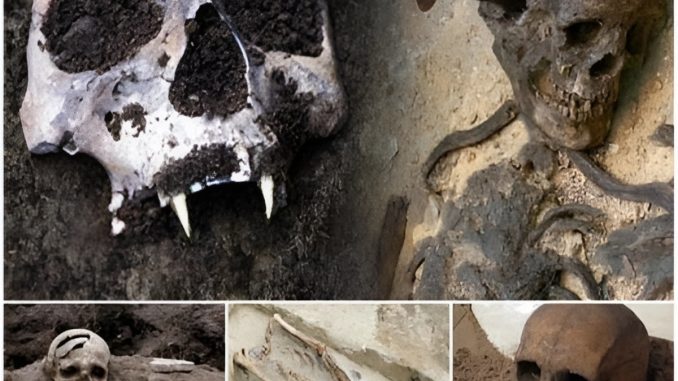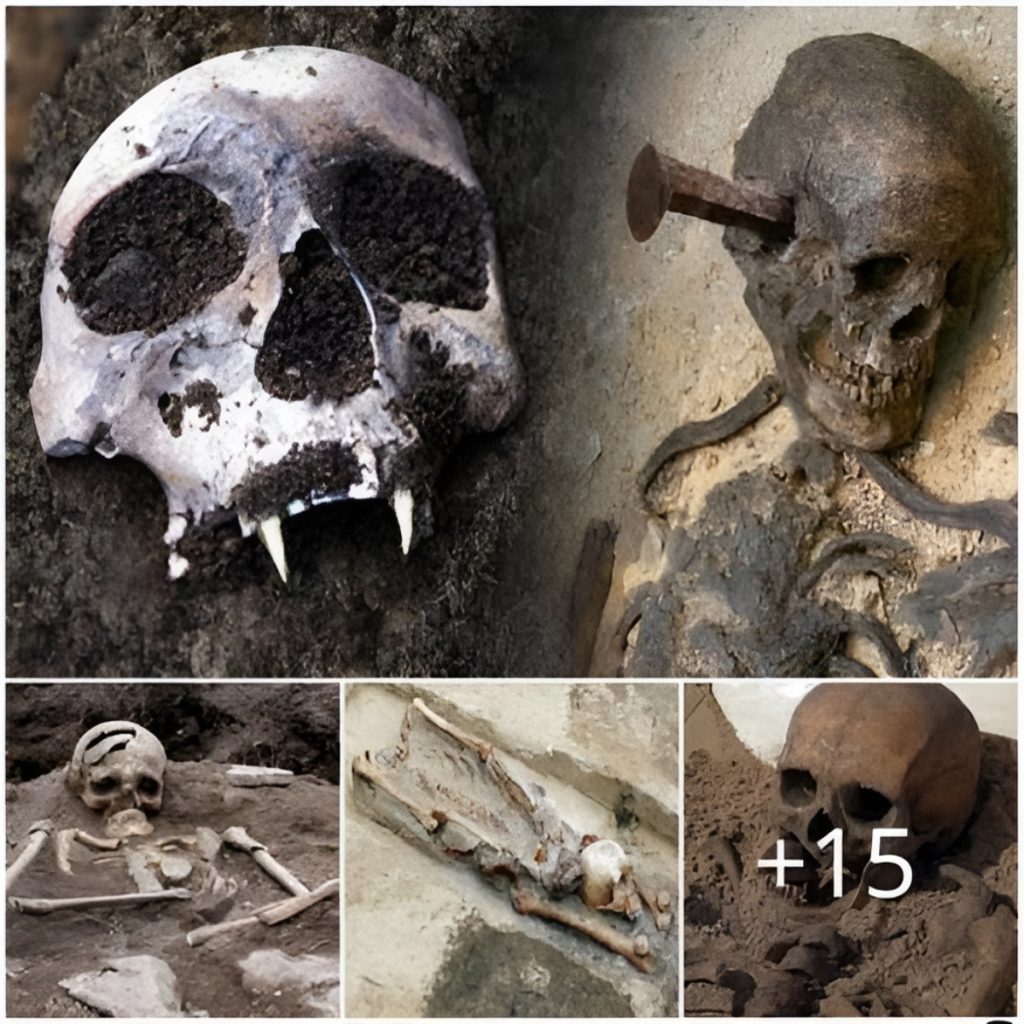
In the world of folklore and legend, tales of vampires have captured the imagination for centuries, with countless cultures around the globe weaving stories of blood-sucking creatures of the night. But while vampires are often associated with Eastern European folklore, recent archaeological discoveries in Ireland have shed new light on the existence of what some believe to be Irish vampires, or at least the remnants of beliefs in vampiric creatures.

In various parts of Ireland, particularly in rural areas steeped in folklore and tradition, archaeologists have unearthed skeletons that bear curious markings and burial practices, hinting at a belief in vampiric entities or revenants. These discoveries have sparked debate among scholars and enthusiasts alike, raising intriguing questions about the origins and nature of these enigmatic figures.
One such discovery occurred in the small village of Kilteasheen, where archaeologists unearthed the remains of a young woman dating back to the 8th century AD. What made this find particularly intriguing was the presence of heavy stones placed on top of the skeleton, suggesting an attempt to prevent the deceased from rising from the grave—a practice commonly associated with vampire folklore.
Similarly, in the coastal town of Co. Waterford, a medieval skeleton was discovered with a large rock wedged into its mouth—a precautionary measure believed to prevent the deceased from feeding on the blood of the living. These burial practices, while rare, suggest a deep-seated fear of the dead and a belief in the existence of vampiric entities among certain communities in medieval Ireland.
But are these skeletons truly evidence of Irish vampires, or are they simply the products of superstition and folklore? The answer remains elusive, as scholars grapple with the complexities of interpreting ancient burial practices and the beliefs that underpinned them.
Some researchers argue that these burial practices may have been driven by a fear of contagion or disease, with heavy stones and other measures intended to prevent the spread of illness from the deceased to the living. Others suggest that these practices may have been influenced by Christian beliefs about the afterlife and the resurrection of the dead.
However, for those who subscribe to the notion of Irish vampires, these discoveries represent tangible evidence of a supernatural belief system that once permeated the fabric of Irish society. According to this interpretation, the skeletons serve as reminders of a time when the boundaries between the living and the dead were blurred, and fears of the supernatural held sway over the hearts and minds of the populace.
Regardless of one’s interpretation, the discovery of these enigmatic skeletons offers a fascinating glimpse into the rich tapestry of Irish folklore and the enduring allure of vampire mythology. As archaeologists continue to unearth new discoveries and scholars delve deeper into the mysteries of the past, the truth behind these ancient enigmas may yet come to light, revealing the secrets of Ireland’s vampire lore for generations to come.
Leave a Reply